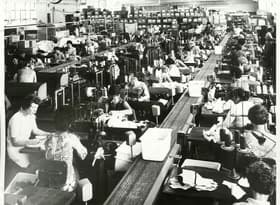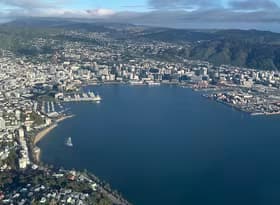Technology and training are vital for improved productivity
This opinion piece was first published in Stuff on 27 March 2022.
The disruption caused by the COVID-19 pandemic and the government’s response of closing the borders have led to an incredibly tight labour market over the last year. The record-low unemployment rate of 3.2% has been backed up by a raft of other indicators showing how difficult it is for businesses to attract and retain employees. With living costs surging as well, workers have both the bargaining power and the motivation to demand significant pay increases during 2022.
The pandemic has also brought into sharp focus New Zealand’s heavy reliance on foreign labour to achieve growth. But even without COVID-19, the aging population and political disquiet about immigration levels suggested we couldn’t continue with the same recipe for economic growth that characterised much of the 2010s. Medium-term forecasts showed that the supply of additional workers would continue to be squeezed throughout this decade. COVID-19 has simply accelerated that labour market tightening.
What are the alternatives if New Zealand is not able to grow its businesses or the economy by simply hiring more workers? Rising costs associated with a shortage of labour should encourage businesses to be more innovative in their operations, which is likely to be reflected in more investment in machinery and other capital that reduces their reliance on labour. In other words, the use of technology enables more output to be achieved with the same number of workers, implying higher levels of labour productivity.
But the holy grail of productivity improvements has been elusive for New Zealand. OECD data in Chart 1 shows that New Zealand is bottom of the pack for productivity growth since 1970. If we look over shorter time periods of 20 or 25 years, New Zealand’s productivity performance moves ahead of other underachievers such as Mexico or Greece, but our productivity growth of 0.9%pa since 2000 still languishes below the OECD average of 1.3%pa.
Amid the gloom, the retail trade industry provides at least one bright spot. Since the Global Financial Crisis in 2008, retail has recorded strong labour productivity growth, averaging 3.2%pa. We’re all familiar with ways the retail industry has changed over the last 15-20 years, such as the introduction of self-service payment options at supermarkets or petrol stations and the continuing trend towards online shopping.
Some people might bemoan the loss of personal interaction caused by these changes. Others might argue that the self-service options take them longer as they grapple with an unfamiliar interface that checkout staff could operate much faster. But the reality is that, without the adoption of technology that has occurred, your petrol or food bills would be even more expensive than they are now, to cover the higher labour costs faced by those firms.
Put another way, Stats NZ data in Chart 2 shows that retail trade in 2000 had the second-highest labour costs per unit of production of any industry. By 2020, retail trade had slipped to sixth on the list because of productivity gains and the industry’s more efficient use of workers.
Looking forward, sustained worker shortages and rising labour costs mean that the most significant pressures for productivity improvements are likely to be felt in industries with high labour costs per unit of output. These pressures will be exacerbated in industries where pay rates are relatively low compared to other employment options, because if there are vacancies to be filled, workers will gravitate towards the jobs in higher-paying industries.
Data on average wages by industry in Chart 3 suggests that, apart from retail trade, the industries that could find it most difficult to retain staff include accommodation and food services; arts, recreation and other services; and construction. Of course, COVID-19 has already had a huge effect on many businesses within the first two industries, and it will be challenging for hospitality and tourism firms to rebuild their post-pandemic operations given the loss of workers and capacity that has occurred. A persistent lack of workers could see robotic help in restaurants become more commonplace and less of a novelty than is currently the case.
As technology continues to alleviate labour shortages over time, particularly for lower-paying jobs, we will see higher average skill levels across the workforce. This progression towards a more highly skilled workforce also requires investment in education, particularly for existing workers who might see their current roles disappear as the uptake of technology advances. The government’s focus on training over the last two years given the disruption of COVID-19 has been welcome. But it also requires ongoing policy work and identification of future workforce needs to ensure people are being trained appropriately as the skills required by employers continue evolving.









